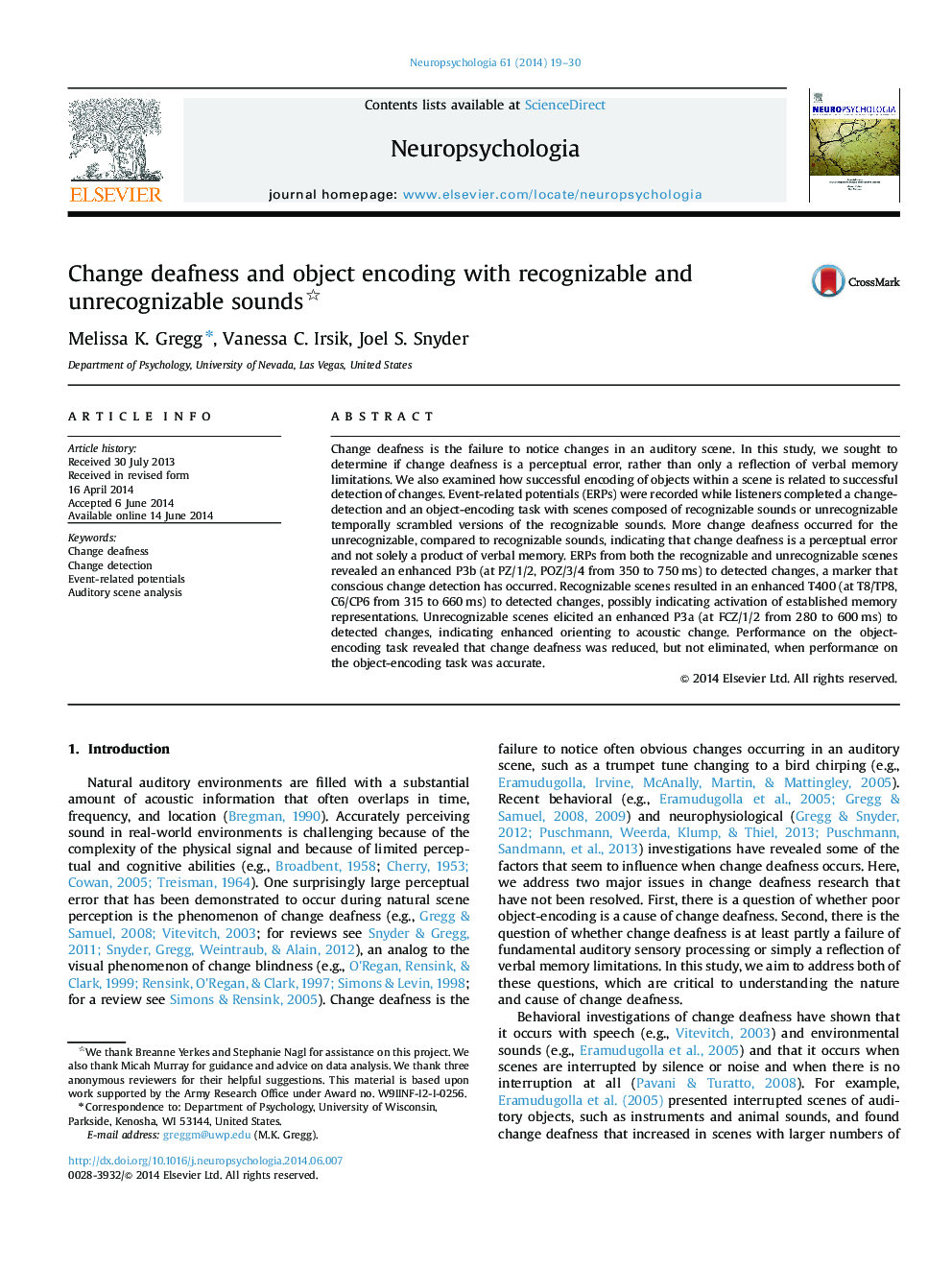| کد مقاله | کد نشریه | سال انتشار | مقاله انگلیسی | نسخه تمام متن |
|---|---|---|---|---|
| 7321021 | 1475592 | 2014 | 12 صفحه PDF | دانلود رایگان |
عنوان انگلیسی مقاله ISI
Change deafness and object encoding with recognizable and unrecognizable sounds
ترجمه فارسی عنوان
تغییر ناشنوایی و کدگذاری شی با صداهای قابل تشخیص و غیر قابل تشخیص
دانلود مقاله + سفارش ترجمه
دانلود مقاله ISI انگلیسی
رایگان برای ایرانیان
کلمات کلیدی
تغییر ناشنوایی، تشخیص تغییر، پتانسیل مربوط به رویداد، تجزیه و تحلیل صحنه های شنیداری،
موضوعات مرتبط
علوم زیستی و بیوفناوری
علم عصب شناسی
علوم اعصاب رفتاری
چکیده انگلیسی
Change deafness is the failure to notice changes in an auditory scene. In this study, we sought to determine if change deafness is a perceptual error, rather than only a reflection of verbal memory limitations. We also examined how successful encoding of objects within a scene is related to successful detection of changes. Event-related potentials (ERPs) were recorded while listeners completed a change-detection and an object-encoding task with scenes composed of recognizable sounds or unrecognizable temporally scrambled versions of the recognizable sounds. More change deafness occurred for the unrecognizable, compared to recognizable sounds, indicating that change deafness is a perceptual error and not solely a product of verbal memory. ERPs from both the recognizable and unrecognizable scenes revealed an enhanced P3b (at PZ/1/2, POZ/3/4 from 350 to 750Â ms) to detected changes, a marker that conscious change detection has occurred. Recognizable scenes resulted in an enhanced T400 (at T8/TP8, C6/CP6 from 315 to 660Â ms) to detected changes, possibly indicating activation of established memory representations. Unrecognizable scenes elicited an enhanced P3a (at FCZ/1/2 from 280 to 600Â ms) to detected changes, indicating enhanced orienting to acoustic change. Performance on the object-encoding task revealed that change deafness was reduced, but not eliminated, when performance on the object-encoding task was accurate.
ناشر
Database: Elsevier - ScienceDirect (ساینس دایرکت)
Journal: Neuropsychologia - Volume 61, August 2014, Pages 19-30
Journal: Neuropsychologia - Volume 61, August 2014, Pages 19-30
نویسندگان
Melissa K. Gregg, Vanessa C. Irsik, Joel S. Snyder,
